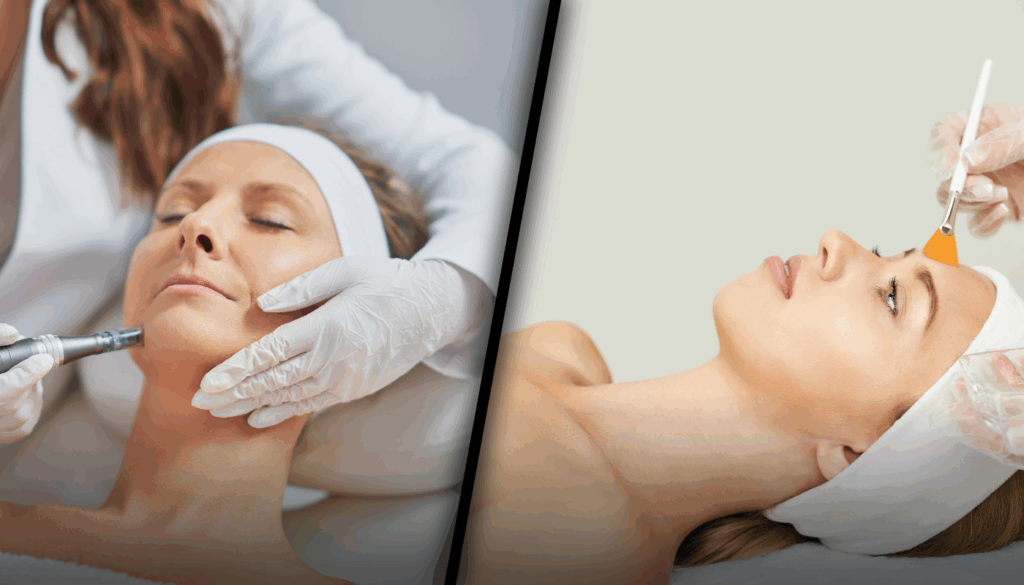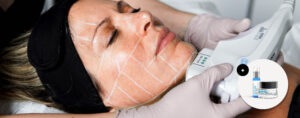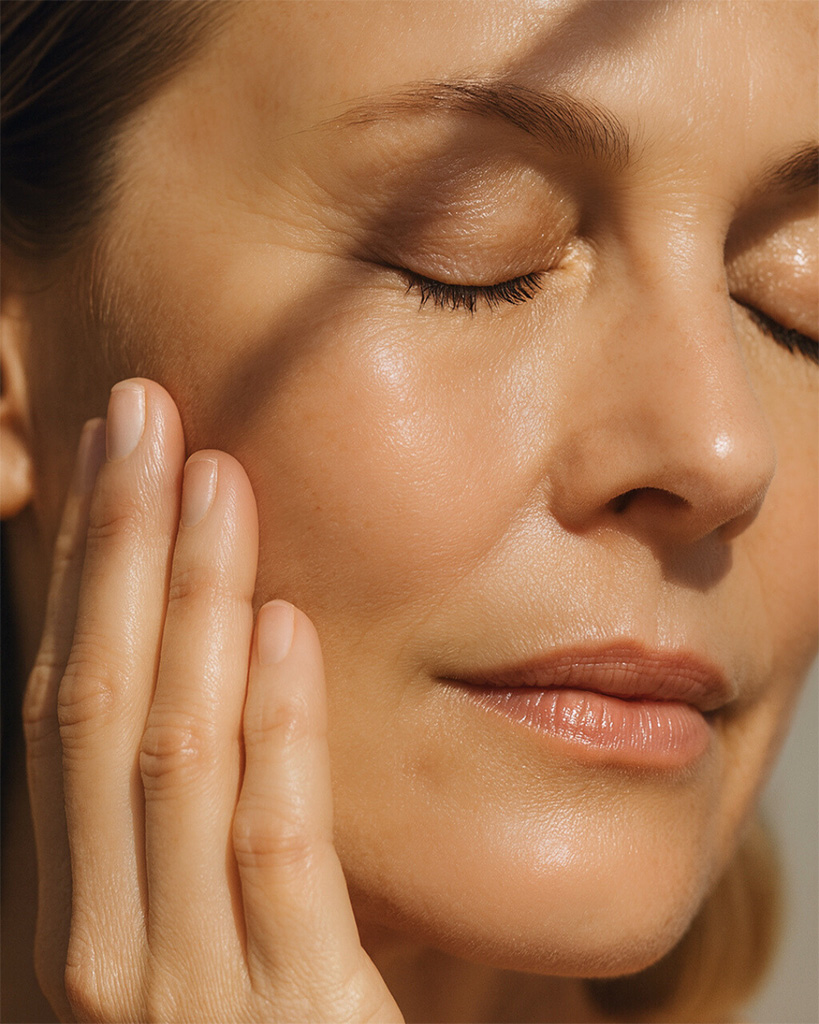If you’re exploring options to improve your skin’s texture, brightness, or overall health, chances are you’ve come across two common treatments: microneedling and chemical peels. Both are frequently recommended in clinics and can address similar concerns like fine lines, acne scars, or uneven tone. But how do you know which one is right for you?
As a patient, it’s normal to feel uncertain when choosing between treatments that sound similar but work in very different ways. Your skin is unique—and so is your lifestyle, tolerance for downtime, and comfort level with certain techniques.
This article is designed to help you understand the differences between microneedling and chemical peels in simple, clear terms. You’ll learn how each one works, what they’re commonly used for, and what kind of experience you can expect. Most importantly, you’ll see why the best choice is often made with the guidance of a skincare professional who understands your skin and your goals.
What Is Microneedling?
Microneedling is a minimally invasive treatment that helps improve the appearance of your skin by encouraging it to heal and renew itself naturally. It works by creating tiny, controlled micro-injuries on the surface of the skin using very fine, sterile needles. While the idea might sound intimidating at first, the process is safe, precise, and performed by trained professionals.
These micro-injuries stimulate your skin’s natural repair process, leading to increased collagen and elastin production, two key elements for firmer, smoother, and healthier-looking skin.
What Concerns Does Microneedling Address?
Microneedling is often recommended for patients who want to improve:
- Acne scars and enlarged pores
- Fine lines and early signs of aging
- Uneven texture or rough skin
- Mild sagging or loss of firmness
It’s also suitable for most skin tones and types, including sensitive skin, because it doesn’t involve heat or chemicals.
What to Expect After the Treatment
After a microneedling session, your skin may look and feel slightly red, similar to a mild sunburn, for 24 to 48 hours. Most people resume their regular activities the next day, with only minimal downtime. Your provider will guide you through gentle post-care, including hydration and sun protection.
Many patients begin to notice improvements after a few sessions, especially when treatments are done regularly as part of a customized skincare plan.
What Is a Chemical Peel?
A chemical peel is a skin resurfacing treatment that uses a carefully selected chemical solution to remove the outermost layers of dead or damaged skin. This controlled exfoliation encourages cell turnover and reveals fresher, smoother skin underneath.
Chemical peels vary in strength and depth, and can be adapted to your skin type and concerns. Some offer very mild exfoliation with no visible peeling, while others result in more noticeable flaking and require a bit more recovery time.
What Concerns Do Chemical Peels Address?
Chemical peels are often recommended to help improve:
- Dull or uneven skin tone
- Sun spots, pigmentation, or melasma
- Fine lines and signs of aging
- Mild acne or post-inflammatory marks
- Surface congestion or rough texture
Depending on your skin’s condition and your comfort level, your provider may recommend a superficial peel for a subtle refresh, or a medium-depth peel for deeper correction.
What to Expect After the Treatment
Your skin may feel tighter or slightly sensitive after a chemical peel. In the days that follow, you might experience mild flaking or peeling, especially with stronger formulas. This is a normal part of the process, and your provider will guide you on how to care for your skin as it heals.
Results can often be seen after just one treatment, though a series of peels may be recommended for more lasting or targeted improvements.
Microneedling vs. Chemical Peels: Key Differences at a Glance
While both microneedling and chemical peels are effective treatments for improving skin tone, texture, and overall appearance, they work differently and may be better suited for different skin types and goals. Here’s a simplified comparison to help you understand how they stack up:
| Feature | Microneedling | Chemical Peel |
|---|---|---|
| How it works | Uses fine needles to create micro-injuries that stimulate collagen production | Uses a chemical solution to exfoliate the skin and accelerate cell renewal |
| Main goals | Improves texture, acne scars, firmness, and fine lines | Brightens skin tone, reduces pigmentation, acne, and dullness |
| Ideal for | Patients with scars, large pores, uneven texture, or early signs of aging | Patients with uneven tone, dark spots, mild acne, or a dull complexion |
| Best for skin types | Suitable for most skin tones, including sensitive | Should be customized for sensitive or darker skin tones |
| Downtime | Mild redness for 1–2 days | Varies: light flaking to visible peeling (1–7 days) depending on the peel |
| Treatment feel | Mild discomfort, similar to light prickling; numbing cream is often used | Tingling or mild stinging during treatment |
| Visible results | Gradual improvement after multiple sessions | Faster surface results after each session |
| Repeat frequency | Every 4–6 weeks | Every 4–6 weeks (depending on type and skin response) |
Both treatments offer real value, but choosing the one that’s right for you depends on more than just what’s written in a chart. Up next, we’ll look at how a professional helps guide that choice.
How to Choose: What’s Best for Your Skin?
With so many treatment options available today, it’s easy to feel unsure about what your skin really needs. And while understanding how microneedling and chemical peels work is helpful, the truth is: your skin isn’t one-size-fits-all—and your treatment shouldn’t be either.
That’s why the best way to choose between microneedling and a chemical peel is to do it with the support of a skin professional who understands both your goals and your skin’s unique characteristics.
During a personalized consultation, your provider will assess:
- The current state of your skin (texture, tone, sensitivity, breakouts, pigmentation)
- Your natural skin tone, which can influence which peels or devices are safest
- Your lifestyle and upcoming events, to align the treatment with your schedule and tolerance for downtime
- Your comfort level with certain techniques, sensations, or visible post-treatment effects
- Any previous treatments or medical history that may affect your skin’s response
Sometimes, the best option is clear. Other times, your provider may recommend starting gently, alternating both treatments over time, or even combining them as part of a broader skincare plan.
Ultimately, the goal isn’t just to choose a treatment, it’s to choose the right one, at the right moment, for your skin.







